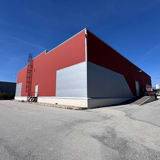Researchers at Cornell University are developing HelioSkin, a lightweight, flexible solar fabric that can be woven around intricate forms to improve sunlight absorption.
Unlike traditional inflexible solar panels, HelioSkin’s unique design is both practical and aesthetically pleasing, which could increase the use of solar energy.
Redefining solar panel uses to make them more adaptable and aesthetically pleasing for contemporary architecture is the goal of the multidisciplinary project.
“What we’re really passionate about is how the system could not only produce energy in a passive way, but create transformational environments in urban or urban-rural settings,” said Jenny Sabin, a professor of Architecture at the College of Architecture, Art, and Planning at Cornell University, in a statement.
HelioSkin is an innovative solar technology inspired by nature’s resilience and the photosynthetic advantage seen in plants that track the sun. The project addresses a critical environmental issue: 40 percent of the United States’ total greenhouse gas emissions come from buildings.
According to the team, by developing a flexible, aesthetically appealing solar skin that can wrap around complex structures, HelioSkin aims to encourage the widespread adoption of solar energy, reducing the 28 percent of CO2 emissions linked to heating, lighting, and cooling in buildings.
The design combines computational design, digital fabrication, and 3D printing to create customized filters and photovoltaic panel assemblies. This method preserves architectural beauty while improving light absorption.
The research incorporates knowledge of cellular morphogenesis, which describes how plant cells develop to bend toward the sun, and heliotropism, which describes how sunflowers track sunlight.
source: Interesting Engineering















